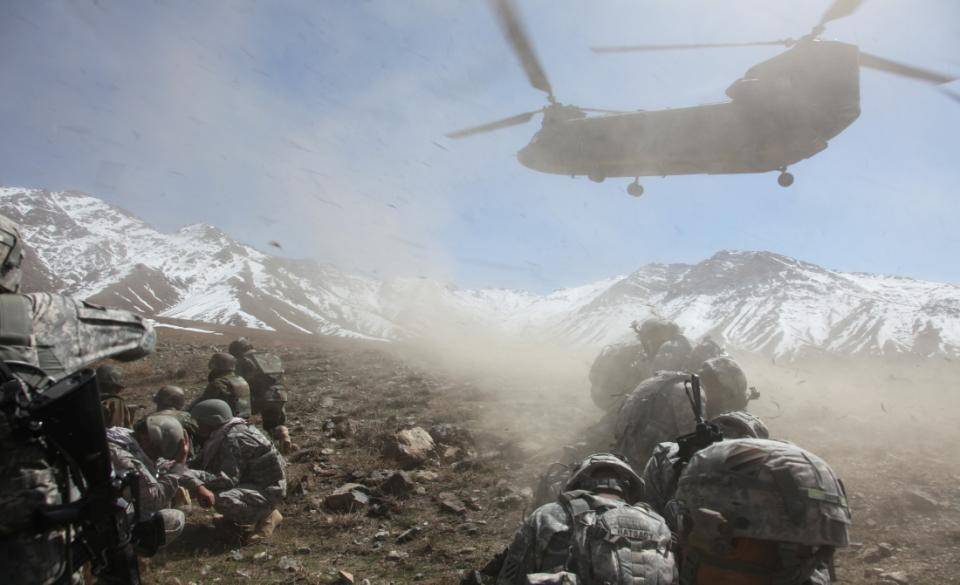Why Are We Losing in Afghanistan?
After much soul-searching, President Donald Trump intends to order the deployment of more U.S. troops to Afghanistan. Although he avoided giving a specific number of troops in his speech to the nation Monday night, the president laid out the case for renewing the U.S. involvement in that country, citing the legacy of 9/11, the dangers of premature withdrawal and the range of security threats in the region.

Published by The Lawfare Institute
in Cooperation With

After much soul-searching, President Donald Trump intends to order the deployment of more U.S. troops to Afghanistan. Although he avoided giving a specific number of troops in his speech to the nation Monday night, the president laid out the case for renewing the U.S. involvement in that country, citing the legacy of 9/11, the dangers of premature withdrawal and the range of security threats in the region. Although Trump lamented that Afghanistan has become America’s longest war, he optimistically promised, “We will win.” Even with the additional troops, however, Trump aims to accomplish more with fewer resources than the United States used in the past; a continued stalemate is the likely outcome.
Afghanistan today looks grim. The United States has spent more than a trillion dollars and lost more than 2,400 troops there, and the commander of U.S. forces in Afghanistan, Gen. John Nicholson, declared the strategic situation a “stalemate” early this year (though he argued that the equilibrium favors the government). In May, Director of National Intelligence Dan Coats warned that conditions in Afghanistan “will almost certainly deteriorate” in 2018 even with a modest increase in U.S. support. The security situation began to degrade dramatically in the final years of the George W. Bush administration, and there was little progress in the eight years of the Obama administration. Barack Obama left office with more than 8,000 U.S. troops in Afghanistan—significantly fewer than the 100,000-troop peak during his term—as well as almost 5,000 international troops. These forces and their Afghan allies failed to secure the country. Government power has declined: As of November 2016, the government controlled only 57 percent of Afghanistan. But Afghanistan has so far avoided reverting to a base for terrorist attacks on the West or to the grim days of Taliban rule in the 1990s.
Several factors explain the U.S. failure to stabilize Afghanistan. The Afghan government is the first culprit. Despite maintaining token democratic credentials, the government’s composition more closely resembles a bargain among elites than leaders who enjoy mass support—no ideology, political party or charismatic leader unites Afghans. By design and necessity, local officials hold much of the power. Government ranks are also remarkably corrupt and violent: Abuses such as extortion and rape by officials are common. Not surprisingly, the government in Kabul does not engender loyalty, regardless of the leader—the problem is structural, not personal. Furthermore, the government’s failures beget failures. Officials’ inability to rein in corruption, establish the rule of law, provide security, or otherwise perform basic governance functions leads Afghans to turn to local rulers, militias and the Taliban, which further undermines the government’s influence.
The Taliban’s commitment and perseverance warrant recognition. After the U.S. invasion in late 2001, the Taliban were on the ropes. Many Taliban fighters and leaders were dead or had scattered to remote areas of Pakistan and Afghanistan. Those forces steadily gained strength and fought several successful major military operations in 2017. In contrast to the Afghan government, the Taliban offer a form of justice with less corruption, which also entices locals to rely on the Taliban rather than the regime in Kabul.
Meanwhile, U.S. and allied forces have not trained their Afghan counterparts in large numbers to fight the Taliban. Afghanistan’s elite commandos fight well, and there are plans to expand their ranks. But these special operations forces represent only 17,000 troops of the country’s 300,000-strong military. Despite repeated attempts, most of the Afghan military fight poorly. Most of these fighters have little loyalty to their officers and political leaders and avoid risking their lives to fight the Taliban. Many flee, desert or defect rather than fight back. Making morale worse, Afghan military and police increasingly take heavy casualties, losing more than 30 people a day.
Within this context, a political deal seems highly doubtful. The Taliban are gaining more territory and political clout, albeit fitfully, and are unlikely to be more conciliatory in any negotiations. In addition, Afghan-based groups such as the Islamic State in Khorasan oppose negotiation, which pressures the Taliban politically and poses a threat to any peacemakers. In addition, the Taliban and their Pakistani backers recognize the U.S. public’s growing weariness regarding the war in Afghanistan, believing—perhaps correctly—that time is on their side. President Trump’s promise to focus on conditions rather than time frames is meant to address this potential weakness, but the war weariness is quite real.
Finally, Pakistan plays an influential, negative role. In his speech, President Trump called out Pakistan, noting correctly that Pakistani leaders are playing a double game and “housing the very terrorists we are fighting.” Pakistan supported the Taliban’s rise in the 1990s, providing the fighters with massive financial and military assistance—at the time, Pakistani intelligence was the Taliban’s “primary patron,” according to the 9/11 Commission. Despite promises to the contrary, Islamabad’s support has not ceased. Since 9/11, Pakistan succored the Taliban, giving them a haven from U.S. counterterrorism operations and assistance with fundraising and logistics. These actions prevented the United States from engaging in the leadership-targeting tactics that devastated al-Qaeda in Iraq’s ranks at the end of the last decade. Instead, the Taliban can control its pace of operations, retrenching to plan and regroup or stepping up attacks to seek opportunities. Defeating the Taliban would require ending the Pakistani sanctuary. Trump’s call for a new approach to Pakistan was vague on specifics, however, and it seems unlikely that Trump will succeed in changing Pakistan’s course when the Bush and Obama administrations failed.
Given these serious issues, a few more thousand troops are not likely to give the United States a clean win or anything close to it. At best, these troops may help shore up coalition forces and assist the United States’ Afghan allies, preserving the stalemate. So the grinding war is likely to continue without end.


.jpg?sfvrsn=407c2736_6)


